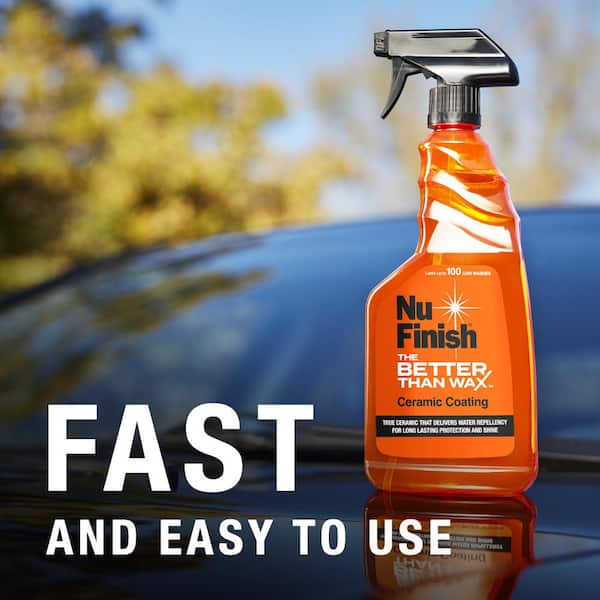Cost-efficient Ceramic Coating Philadelphia Solutions for Luxurious Finishes
Cost-efficient Ceramic Coating Philadelphia Solutions for Luxurious Finishes
Blog Article
Why Ceramic Finish Is the Ultimate Remedy for a Perfect End Up
Ceramic layer has arised as a leading solution for those seeking a flawless finish for their vehicles, many thanks to its exceptional resilience and protective features. What aspects absolutely set ceramic finishing apart?
What Is Ceramic Coating?

When used properly, ceramic layer produces a hydrophobic surface area that drives away water and dirt, making it easier to cleanse and keep. Unlike traditional waxes or sealers, which normally supply temporary security, ceramic finishes can last for a number of years, depending on the product quality and application approach. The process of applying ceramic layer requires careful preparation, consisting of complete cleansing and sometimes paint modification, to ensure ideal bonding and efficiency.
Ceramic layers are not restricted to auto surfaces; they can also be utilized on different materials, consisting of glass, metal, and plastics, supplying a versatile solution for enhancing protection. Generally, ceramic layer stands for a significant advancement in surface area defense innovation, combining both visual and useful advantages for a large range of applications.
Advantages of Ceramic Layer
While numerous surface security options exist, the advantages of ceramic coating stand out because of its one-of-a-kind homes and durable performance. Among the primary advantages is its remarkable sturdiness. Ceramic Coating Philadelphia. Unlike standard wax or sealers that call for regular reapplication, ceramic finishings give a durable layer that can last for several years, dramatically reducing upkeep efforts
One more remarkable benefit is enhanced security against environmental contaminants. Ceramic coverings produce a hydrophobic surface that drives away water, dust, and various toxins, making it less complicated to cleanse. This attribute not only protects the automobile's look however also decreases the threat of deterioration and oxidation, particularly in rough weather.
Additionally, ceramic coverings supply exceptional resistance to UV rays, avoiding fading and deterioration of paint in time. This UV protection is crucial for preserving the visual value of surfaces and vehicles revealed to route sunshine.
Furthermore, the glossy coating achieved with ceramic finish enhances the general visual appeal, giving surface areas a showroom-quality luster. Overall, ceramic coverings stand for a considerable development in surface area security modern technology, giving enduring advantages that accommodate both visual and useful demands.
How It Functions
Comprehending the scientific research behind ceramic layers reveals just how they provide such amazing security and durability. At its core, a ceramic finishing is a liquid polymer that chemically bonds with the lorry's factory paint. This bonding develops a safety layer that is both hydrophobic and oleophobic, repelling water, dust, and oil. The main element of many ceramic coatings is silicon dioxide (SiO2), which is stemmed from quartz. This substance adds to the layer's firmness and resistance to scratches, UV rays, and environmental contaminants.
The application procedure involves numerous actions, consisting of surface preparation, which is important to achieving ideal bond. As soon as applied, the layer undertakes a healing procedure, throughout which it solidifies and forms a semi-permanent bond with the paint surface. This bond is what identifies ceramic finishes from standard waxes and sealers, providing a longer-lasting protective barrier that can sustain for years.
Moreover, the density of the layer can improve its safety qualities, guaranteeing that it can withstand severe problems. Inevitably, the scientific research of ceramic finishings incorporates innovative materials with ingenious application strategies to provide an unrivaled degree of security and aesthetic enhancement for lorries.
Comparison With Traditional Techniques
The advantages of ceramic coverings come to be specifically noticeable when compared to standard paint defense approaches such as sealers and waxes. While waxes use a momentary luster, commonly lasting a few weeks to a pair of months, ceramic coverings provide a resilient protective layer that can withstand for numerous years. This toughness substantially minimizes the regularity of reapplication, making ceramic finishings a more cost-efficient remedy gradually.
In addition, typical techniques commonly call for considerable preparation and numerous applications to attain a satisfying degree of security. In contrast, ceramic finishings bond at a molecular level with the vehicle's surface area, producing a durable shield versus ecological contaminants like UV rays, acid rain, and road salts. This bond improves the vehicle's resistance to scrapes and swirl marks, which prevail with typical waxes and sealants.
Additionally, the hydrophobic properties of ceramic click here to read finishes ward off water and dirt, causing easier cleansing and upkeep. On the other hand, wax and sealant-treated surface areas can draw in grime, necessitating more frequent washing - Ceramic Coating Philadelphia. Generally, ceramic layers not only give exceptional defense but likewise supply a much more aesthetically attractive and long-lasting finish, establishing them as the recommended selection for critical vehicle owners
Application and Maintenance Tips

Utilizing a foam applicator, apply the finishing in little areas, complying with the supplier's guidelines pertaining to thickness and overlap. Allow sufficient healing time in between layers, commonly 1 day, to make sure correct bonding. After application, it is crucial to stay clear of exposure to water or extreme elements for a minimum of a week to permit the coating to fully treat.
For maintenance, clean the car consistently with pH-balanced soaps and stay clear of abrasive materials. Touchless cars and truck laundries are advised to reduce scraping. Furthermore, utilizing a ceramic upkeep spray can improve the layer's hydrophobic properties and long life. Normal examinations for any kind of indications of wear will certainly help preserve the layer's stability and maintain that beautiful finish.
Verdict
In conclusion, ceramic finish emerges as a superior alternative for accomplishing a remarkable auto coating. By forming a robust bond with manufacturing facility paint, ceramic layer successfully shields versus scrapes, UV rays, and ecological contaminants.

Report this page